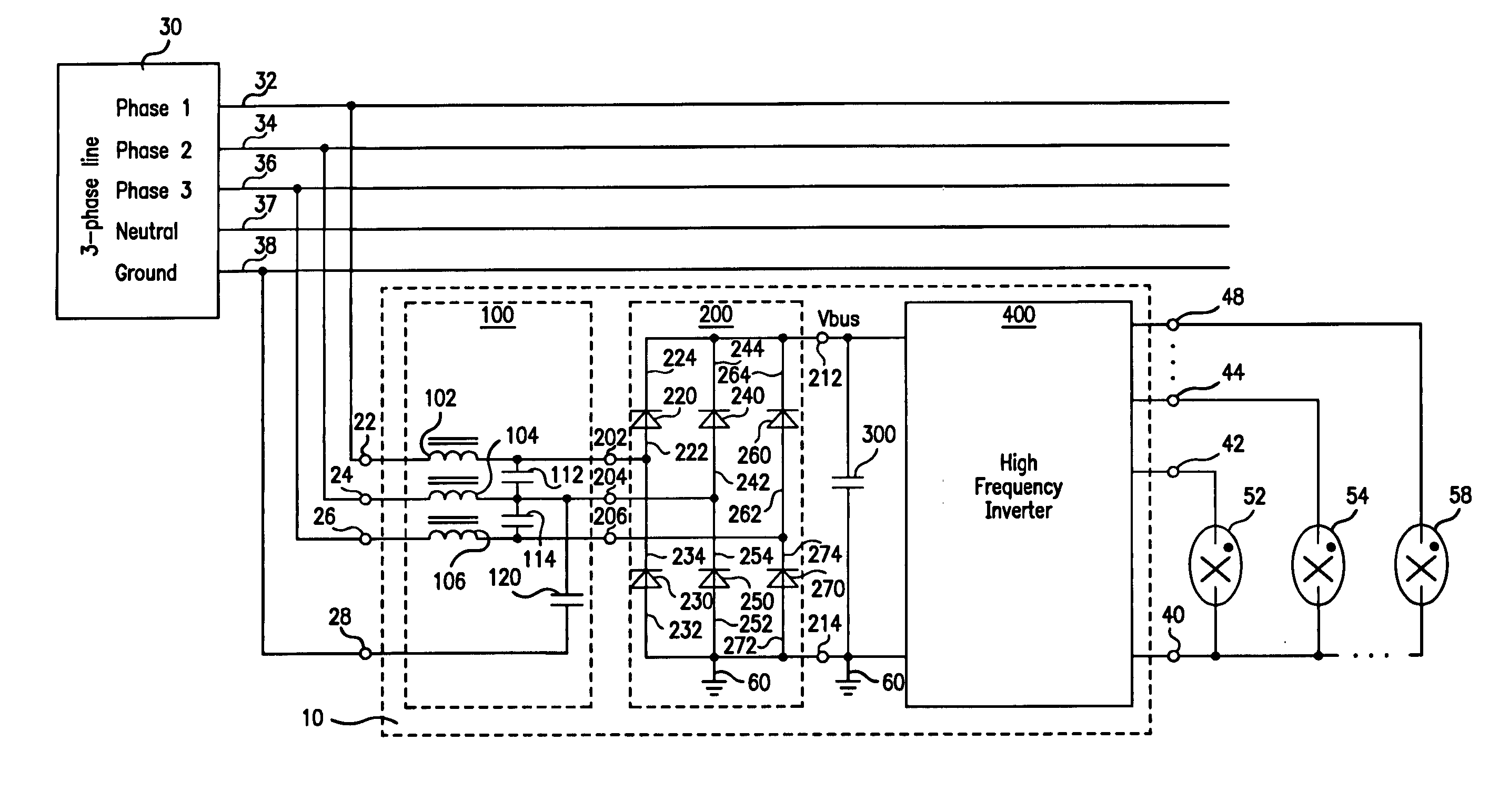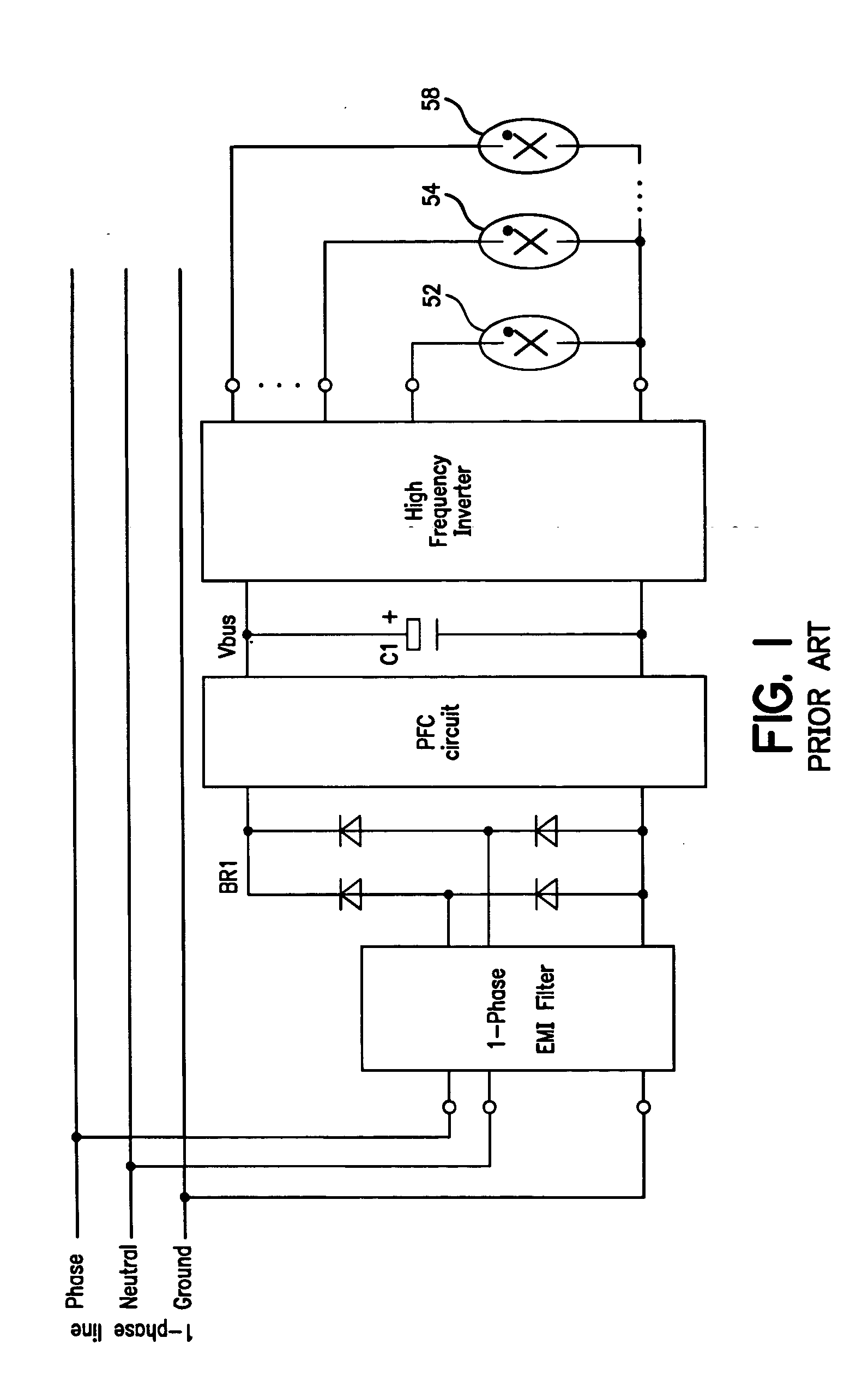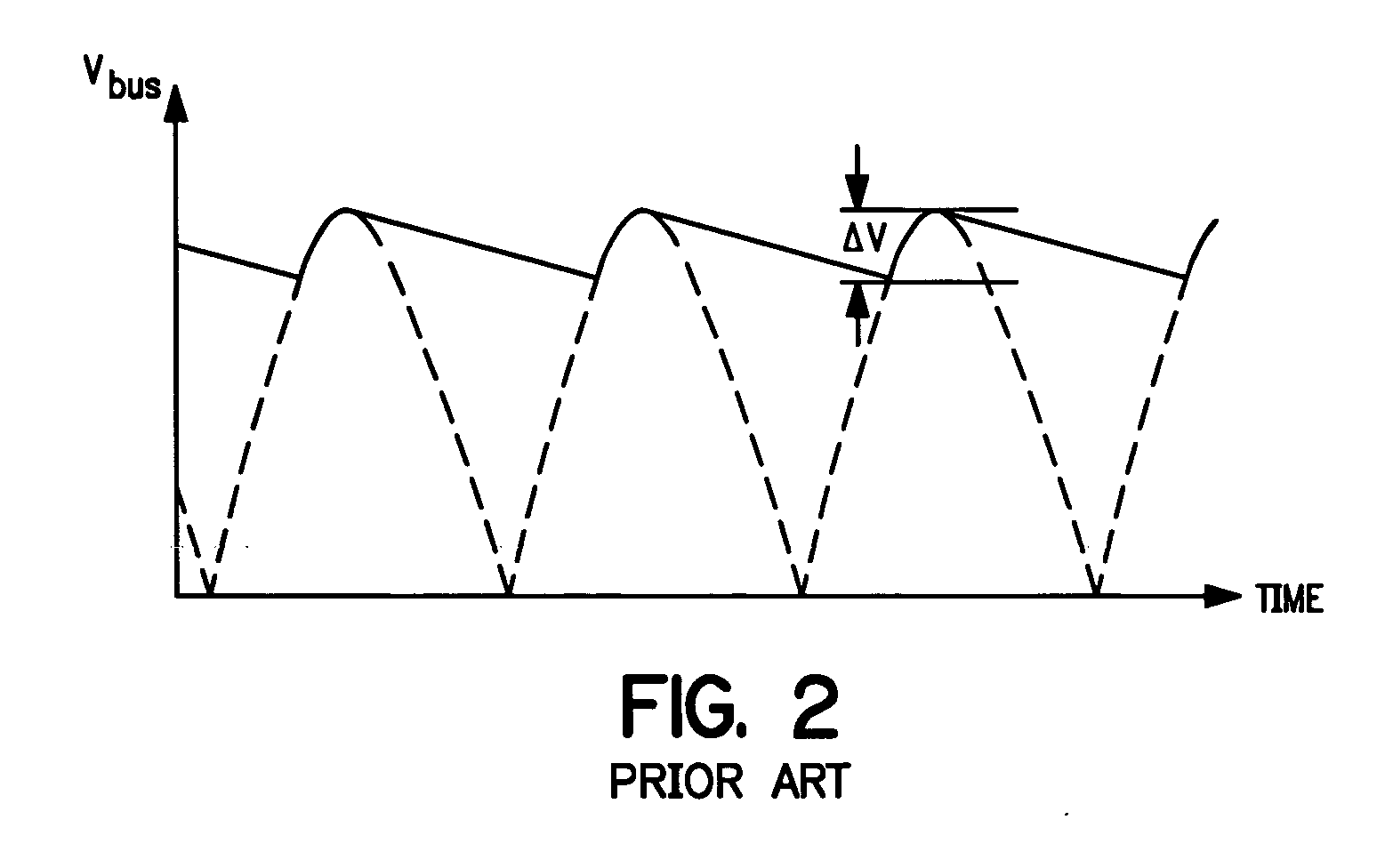Three-phase electronic ballast
- Summary
- Abstract
- Description
- Claims
- Application Information
AI Technical Summary
Problems solved by technology
Method used
Image
Examples
Embodiment Construction
[0014] A ballast 10 for powering at least one gas discharge lamp 52 from a three-phase alternating current (AC) voltage source 30 is described in FIG. 4. Ballast 10 comprises a three-phase rectifier circuit 200, a high frequency filter capacitor 300, and a high frequency inverter 400. Three-phase AC voltage source 30 is a conventional 60 hertz voltage source that is provided by the electrical utility company.
[0015] In a preferred embodiment of ballast 10, three-phase rectifier circuit 200 comprises a first input terminal 202, a second input terminal 204, a third input terminal 206, a first output terminal 212, a second output terminal 214, a first diode 220, a second diode 230, a third diode 240, a fourth diode 250, a fifth diode 260, and a sixth diode 270. First input terminal 202 is adapted to receive a first phase 32 of three-phase AC voltage source 30. Second input terminal 204 is adapted to receive a second phase 34 of source 30. Third input terminal is adapted to receive a th...
PUM
 Login to View More
Login to View More Abstract
Description
Claims
Application Information
 Login to View More
Login to View More - R&D
- Intellectual Property
- Life Sciences
- Materials
- Tech Scout
- Unparalleled Data Quality
- Higher Quality Content
- 60% Fewer Hallucinations
Browse by: Latest US Patents, China's latest patents, Technical Efficacy Thesaurus, Application Domain, Technology Topic, Popular Technical Reports.
© 2025 PatSnap. All rights reserved.Legal|Privacy policy|Modern Slavery Act Transparency Statement|Sitemap|About US| Contact US: help@patsnap.com



